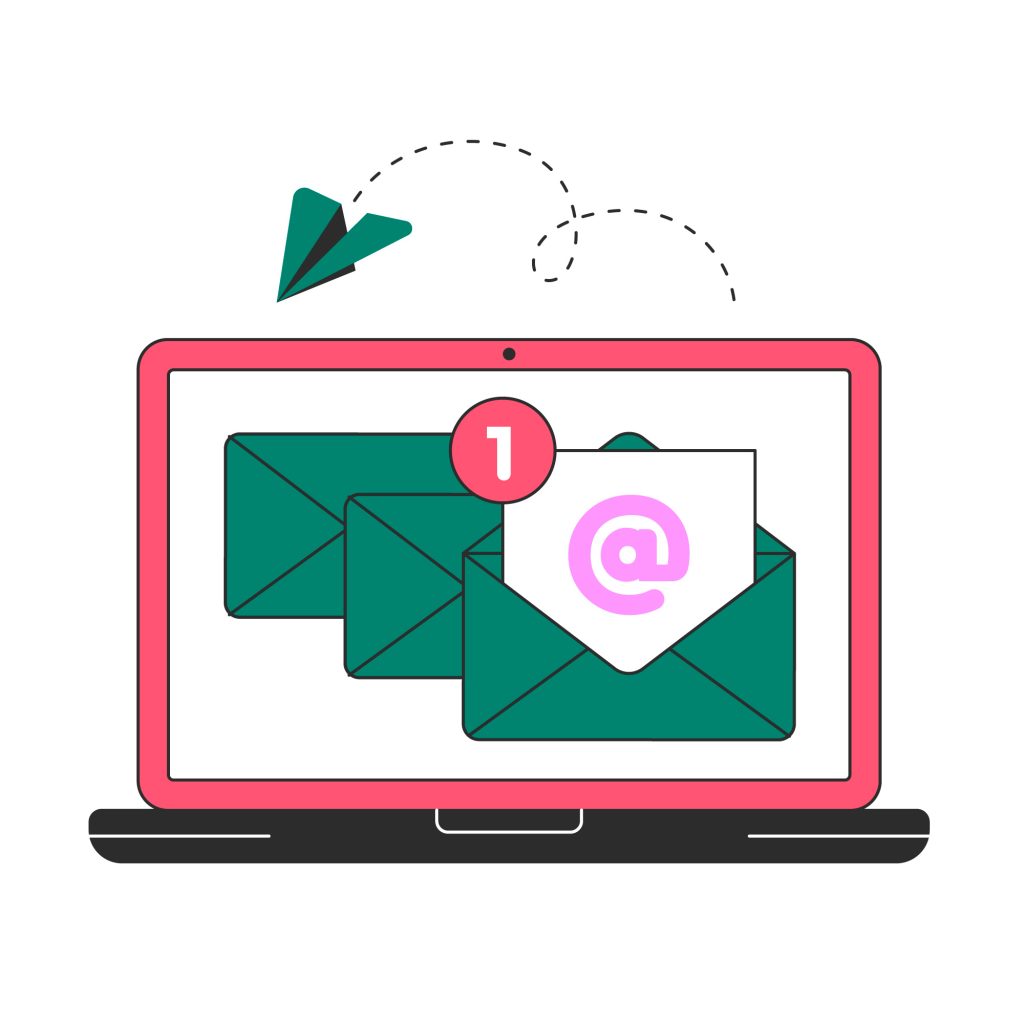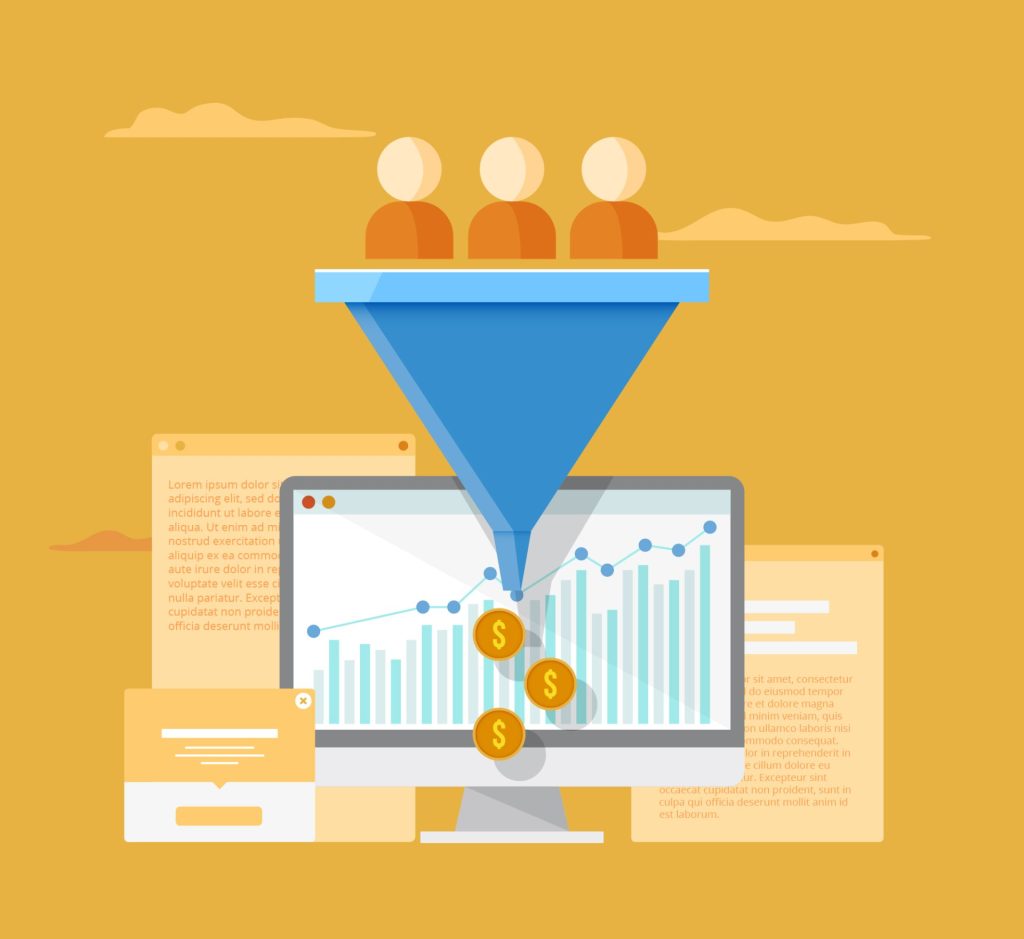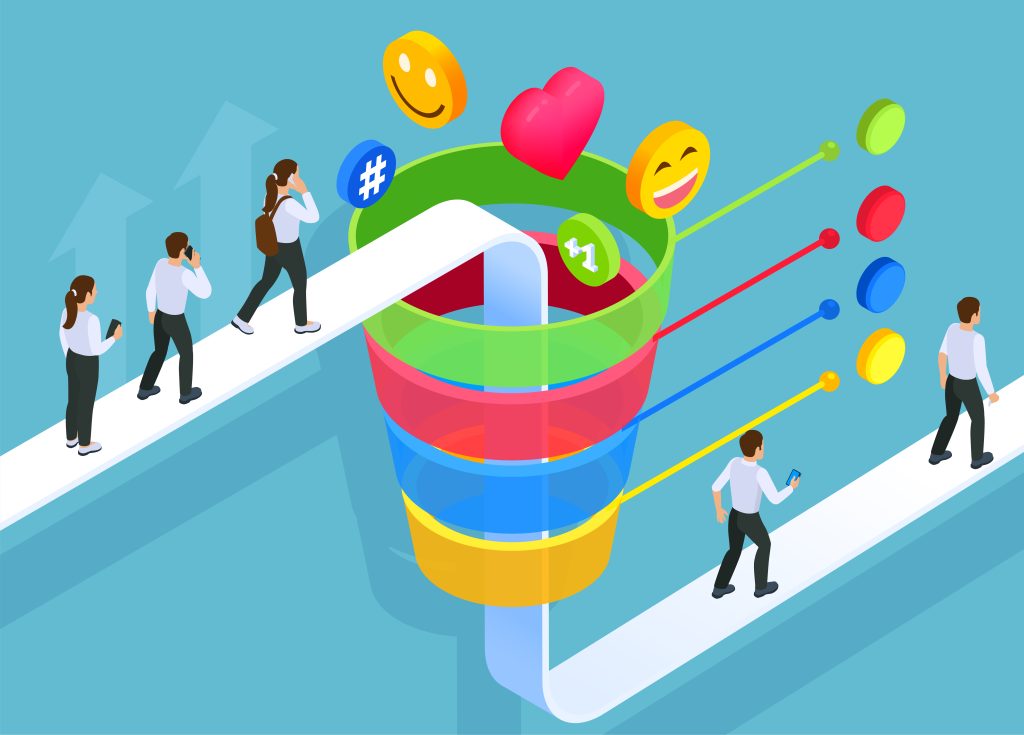Expert PPC Tips for Franchise Success: Your Ultimate Guide to Winning Local Markets in 2025

Unlock franchise growth with expert PPC strategies tailored for local markets. This guide covers keyword research, geo-targeting, smart budgeting, and ad optimization to help you drive traffic and boost ROI. Perfect for franchisors and franchisees looking to master pay-per-click advertising and win in competitive local search results.
The Art of Crafting Irresistible Lead Generation Campaigns!

The phrase “lead generation campaign” is more than just a catchphrase in the field of digital marketing; it refers to a critical tactic for drawing in new clients and constructing a strong email list. Your target demographic is drawn in by an appealing lead magnet that sounds like a siren song and offers value. This post explores the skill of developing attention-grabbing lead magnets that turn prospects into devoted followers. Admittedly, not every lead is made equal. Prospective clients who are both financially capable of making a purchase and truly interested in your goods or services are what you need. That’s the point at which B2B lead generating tactics become useful. We’ll look at tried-and-true methods in this article to assist you in luring and developing the best prospects for your company. Defining Quality Leads Quality leads are the lifeblood of any successful sales strategy. They’re not just any contacts in your database; they’re prospects with a high likelihood of becoming valuable customers. A common mistake is confusing quantity with quality. Don’t fall into the trap of chasing after every lead. Focus on those that truly fit your criteria. It’s better to have 10 high-quality leads than 100 low-quality ones. To identify quality leads, use lead scoring systems. Assign points based on demographics, firmographics, and engagement levels. This helps prioritize your efforts on the most promising prospects. Remember, the definition of a quality lead can vary depending on your business model and industry. Regularly refine your criteria based on your successes and failures. What works for one company might not work for another, so it’s crucial to develop a tailored approach. Setting out Goals Developing a comprehensive lead generation strategy begins with setting clear, measurable goals that align with business objectives. By defining SMART goals—specific, measurable, achievable, relevant, and time-bound—you can ensure focus and track progress. For example, a goal might be to “increase qualified leads by 25% in the next quarter.” It’s essential that these goals support broader company objectives, such as revenue growth or market expansion, and that key performance indicators (KPIs) are established to track metrics like conversion rates and cost per lead. Quality leads should be prioritized over sheer volume to improve the chances of conversion. Identifying Your Audience Identifying your target audience is another crucial aspect. This involves creating detailed buyer personas that outline customer demographics, job roles, pain points, and decision-making processes. You should also analyze existing customers to spot patterns and use market research to refine your focus. Audience segmentation is key, enabling you to personalize messaging and marketing strategies. For sales, consider the entire buying committee, including decision-makers and influencers. Finally, evaluating factors like firmographics and technographics helps tailor solutions to your target market’s needs. Together, these steps build a strong foundation for generating high-quality leads that align with your business goals. Creating Valuable and Relevant Content Content marketing plays the major role in generating quality leads. By creating valuable and relevant content, you’ll attract potential customers and establish your company as an industry authority. Focus on addressing your target audience’s pain points and interests through various content types: Consistency is key in content marketing. Develop a content calendar to maintain a steady flow of publications across your chosen platforms. Diversifying your content formats also helps reach a wider audience and cater to various learning preferences, but you should ensure to factor in your audience’s preference and the platform you are sharing it on By leveraging diverse content formats, you’ll increase your chances of engaging potential leads and guiding them through the sales funnel. Email list Lead generation is not complete if there is no email list. By crafting targeted campaigns, you’ll engage potential clients and nurture relationships that drive conversions. Building a robust email list is the bases for successful lead generation without it, who are you going to market to? Start by offering valuable content in exchange for email addresses on your website. Use lead magnets like whitepapers, eBooks, or industry reports to entice visitors to subscribe. Carry out pop-ups and exit-intent forms to capture leads before they leave your site. Once you’ve built your list, segment your list base on necessary category like: Industry, Company size, etc. Segmentation allows you to tailor your messages to specific audience groups, increasing relevance and improving open rates. For example, send product updates to existing customers and educational content to new subscribers. Compelling Email Content Your email content needs to grab attention and provide value to your audience. Remember to test different email elements, such as subject lines, content, and send times, to optimize your campaigns for better performance. A/B testing helps you identify what resonates best with your audience and refine your approach over time. You need to create email marketing campaigns that not only generate quality leads but also nurture them through the sales funnel. At Dgazelle, we specialize in crafting compelling email content tailored to your audience, ensuring you drive conversions and achieve business growth. Choosing the Right Platforms Social media platforms provide significant opportunities for lead generation by identifying, engaging, and nurturing potential clients, ultimately driving business growth. Start by researching where your target clients are active. LinkedIn is typically a strong choice, but platforms like Twitter, Facebook, and industry-specific forums shouldn’t be overlooked. Evaluate platform demographics to ensure they match your target audience, and consider industry trends when making your choice. For example, tech companies may thrive on Twitter, while LinkedIn might be more suitable for professional services firms. Assess content compatibility as well—if your strategy involves videos, platforms like YouTube or TikTok may be worth exploring. Focus on excelling in one or two channels before expanding. Engaging with Leads Once the platforms are selected, create valuable content—articles, infographics, and videos that address your audience’s pain points. Use social listening tools to monitor industry discussions and tailor your approach to individual leads. Share social proof, like client testimonials or case studies, to build credibility. Hosting virtual events or webinars can also attract potential leads. Consistent engagement, including
Double Your Leads with This Proven Strategy

The key to a successful business is leads generation, which goes beyond creating a product and launching it. For businesses hoping to develop their clientele, boost sales, and eventually spur expansion, generating leads is fundamental. Even while getting new leads is by no means simple, there are tried-and-true tactics that work in a variety of sectors that every company may use. We’ll go through doable tactics in this post to help you revive your lead generating campaigns. 1. Design content marketing resources using a user-focused approach to draw in viewers. One effective strategy for generating leads is content marketing. Businesses may draw in and interact with leads by producing rich and pertinent content that aligns with the needs of their target audience. Whether you’re producing blog articles, films, infographics, podcasts, or social media material, carefully crafted and released content lets you show off your knowledge, win over supporters, and establish credibility with prospective clients. Delivering top-notch material on a regular basis will help you draw in readers, increase website traffic, and turn site visitors into leads. 2. Drive traffic to your strategic pages by identifying opportunities in your SEO strategy Businesses trying to increase their online lead generation must invest in search engine optimization, or SEO. You may improve your exposure in search results and draw in organic traffic by optimizing your website and content for search engines. Good link-building, on-page SEO, and keyword research techniques can raise the rankings of your website considerably. You’ll likely draw in qualified prospects who are actively looking for the goods or services you provide if your website shows up on the first page of search results. Local brick and mortar businesses can gain from using a local SEO strategy as well. Potential clients that are actively searching for goods or services in your region can be your target market. There are a number of strategies involved in local SEO, such as optimizing your Google My Business profile, creating location-specific content, and obtaining local citations and reviews. 3. Collect user data easily with gamified marketing Gamification is a perfect tool for lead generation since it uses game mechanics and concepts to increase user engagement in non-gaming contexts. Games, surveys, competitions, and quizzes that draw in new clients are all readily customizable. How? They can convey a story, are interactive, and appeal to human tendencies toward competitiveness and distraction almost universally. In addition to amusing and educating your audience, these interactive experiences offer insightful information and data that can be utilized for lead nurturing. Additionally, you may use intermediary screens to show data collecting screens to your audience, encouraging them to provide personal information and opt-in to email marketing because they’re more likely to do so. 4. Webinars and events Events and webinars are great ways to showcase your knowledge, goods, and services while generating leads. You may draw in a targeted audience and establish your company as a thought leader in your sector by holding webinars or taking part in industry events. You can connect with prospective clients during these interactive sessions, respond to their inquiries, and highlight the benefits of what your company has to offer. Attendees’ contact information can be used to efficiently follow up with and nurture these prospects, eventually turning them into paying clients. Pro tip: For even greater outcomes, gamification can be implemented in events, which are a perfect arena for it. Incorporating gamified experiences into event schedules can serve as a conversation starter, encourage consumers to interact with your content through new channels, solicit feedback, and even be used to encourage users to visit or utilise different booths or areas of your event – whether it’s a virtual event or an event taking part inside a physical venue. 5. Use live chat Because it allows you to communicate with website visitors in real time, live chat is an invaluable tool for lead generation. By adding a live chat function, you may maximize the likelihood that a visitor will become a client by offering prompt assistance, responding to queries, and addressing issues. This will also increase visitor engagement. If you now offer live chat, evaluate how well it performs, take a close look at the rigid processes you have in place to guarantee constant quality from operator to operator, and optimize for the greatest customer experience. Gamification can be effectively implemented in situations where your live chat resource has limited hours of operation. You may include Product Recommendation Quizzes on targeted sites for particular ranges. These quizzes ask users a series of questions regarding their needs, and ultimately recommend a product at the end of the experience. By including a contact form with options to opt-in, you can not only potentially create a conversion, but it can generate leads for you 24/7. Conclusion Using all of these tried-and-true lead generating techniques will greatly improve your company’s capacity to draw in and win over new clients, which will ultimately boost sales and expansion. Profitability and yearly growth are derived from conversion, which begins with leads. The foundation of all these tactics is discovering and drawing in an audience, interacting with that audience, and establishing a rapport with them so that you can take advantage of sales chances. GET IN TOUCH With our proven strategies and tailored approach, we’ll supercharge your lead generation, connecting you with the right audience and boosting your conversions like never before. Ready to see results? Let’s get started!
How to Create Successful Email Drip Campaigns.

One excellent way to interact with and get to know your customers is through email marketing. Emails are automatically sent out by drip campaigns in response to predetermined actions or timetables, simplifying the procedure. Email drip campaigns can be used for any purpose, such as introducing yourself to new clients or turning leads into repeat business. They are also very easy to set up and use. Learn about email drip campaigns, how to start one, their advantages, and some successful instances by continuing to read. What is email drip campaign A drip campaign is a sequence of emails that are delivered automatically in response to a predetermined schedule or user activity. It is also referred to as automated marketing or automated email campaign. Delivering the appropriate information to the right person at the right time is the goal of drip marketing. You may create campaigns, for instance, to send out welcome emails to those who join your email list and emails with price details to visitors who have been looking at your products page for a few days but haven’t made a purchase. To ensure that your email content is as specifically targeted as possible, you can segment your email list however you see fit and apply different triggers to different groups. The recipient’s name and other details can be included to drip emails, which are prewritten and can be modified. Types of email drip campaign These are just a few of the numerous email drip campaign configurations you can create. Welcome email A new subscriber is introduced to your business and extended a warm welcome to your online community through welcome emails. They provide your company a more human touch and inform clients of what to expect from your communications. A discount code may be included as a token of appreciation for signing up. Onboarding emails While welcome emails and onboarding drip emails are delivered at the beginning of a customer’s relationship with your business, onboarding drip emails offer more practical information about your company than welcome notes do. Users who receive onboarding emails may be informed of anything particularly significant about your business or product, as well as how you differentiate yourself from rivals in the industry and how to get in touch with you should they have any problems. These emails may also include instructions on what the recipient should do next to maximize their benefit from your company. emails about shopping cart abandonment When a visitor adds something to their online shopping basket and then departs from your website without completing the purchase, this is known as shopping cart abandonment. When this occurs, you can utilize drip campaigns to remind the visitor via email that they are intending to make a purchase. emails for subscription renewal Use a drip campaign to inform clients that their subscriptions are about to expire in order to build your company’s credibility and give them a sense of importance. Thank your clients for their business in the email and make it simple for them to unsubscribe if they so choose. Listing building emails In order to ask new website visitors to consent to receiving emails from you, you can also run a drip campaign. Building your email list with clients who are really interested in your business and are likely to interact with your material is made simple using this method. How do you create an email drip campaign? Here are six easy steps to start an email drip campaign of your own. 1. Determine your triggers and audience. Determining the target audience for the emails is the first and most crucial stage in an email drip campaign. Your audience needs to be divided up, and you need to choose which groups and triggers to employ to reach them. A wonderful method to tailor your drip campaigns and provide your consumers the information they need at the correct moment is to identify your audience. This will help them feel appreciated and encourage them to become repeat customers. Based on user activity, clicks, and frequency of visits, target your customers. 2. Establish your objective. Setting a target is the second most crucial step in developing an effective email drip campaign. It is easier to organize the other components of your campaign and maintain focus when you have a clear goal in mind. When creating a goal, follow the SMART approach: make it time-based, relevant, measurable, attainable, and specific. What outcomes are you hoping the drip campaign will bring about? That’s what you want to achieve. 3. Compose your email. Use the knowledge you now have about your aim and target audience to help you write the email copy. Your email should have a clear call to action (CTA), be helpful, and catch readers’ attention. Consider your goals and what you would like the user to do. Do you want the person receiving it to buy something? Would you like to share product information? That ought to be reflected in the text. Make sure your message is understandable and authentic to the voice and brand of your business. 4. Make a campaign plan. Plan your drip strategy from start to finish to guarantee its success. This entails choosing how to divide up your clientele, establishing your objective, and figuring out how to gauge the campaign’s effectiveness. When organizing your drip campaign, keep these things in mind. 5. Start the advertising campaign. You are prepared to start the campaign once you have chosen which numbers to track, developed your message, and identified your target audience and aim. You have two options: use some of the top email marketing services or marketing automation tools, or put your own email drip campaign software into action. Creating emails and scheduling them for automatic sends based on various triggers is made simple by these tools. 6. evaluate the campaign. For a complete picture of your drip campaign’s effectiveness, you should evaluate it both during and after it is put into action. Utilize the metrics you selected during
Conversion Rate Optimization for Small Businesses

Introduction Welcome, brave souls of the business world, to the ultimate guide on conquering the elusive beast known as Conversion Rate Optimization (CRO). Grab your armor and sharpen your swords because we’re diving headfirst into the battlefield of digital marketing! In the grand scheme of online conquests, Conversion Rate Optimization (CRO) is the noble art of turning mere visitors into loyal customers. It’s the secret sauce, the magic potion, the golden ticket to boosting your website’s performance and unleashing its full potential. Now, you might be thinking, “Why should I care about CRO? I’m just a small fish in this vast ocean of commerce.” Ah, but dear entrepreneur, therein lies the beauty of CRO. It levels the playing field, empowering small businesses to compete with the big sharks and emerge victorious. Understanding Conversion Rate Optimization Picture this: You have a magnificent castle (your website) filled with treasures beyond imagination (your products or services). But what good are treasures if no one knows they exist? CRO is the masterful art of guiding visitors through your castle’s labyrinthine halls and convincing them to claim their rightful loot. Image Source: Freepik Key Metrics and KPIs In the land of CRO, knowledge is power. Arm yourself with the mighty sword of metrics and KPIs to measure your conquests. From conversion rates and bounce rates to average session duration, these metrics are your trusty companions on the quest for optimization glory. Benefits of CRO for Small Businesses Now, let’s talk perks. By embracing the ways of CRO, small businesses can unlock a treasure trove of benefits. Increased sales? Check. Higher ROI? Double check. Enhanced user experience? You betcha. It’s like finding the mythical fountain of youth for your website’s bottom line. Analyzing the Conversion Funnel Ah, the conversion funnel – the labyrinthine maze where visitors embark on their quest from curious bystanders to loyal patrons. Let’s sharpen our swords and light our torches as we venture into the heart of this enigmatic realm. Mapping the Customer Journey Picture this: Your customers are intrepid adventurers, embarking on a grand quest through the treacherous lands of your website. But every hero needs a map to navigate the perils ahead. By mapping out the customer journey, you gain insight into their motivations, pain points, and desires, guiding them on their path to glory (and conversion). Identifying Conversion Bottlenecks Alas, even the bravest of adventurers may stumble upon obstacles in their path. These treacherous bottlenecks, lurking in the darkest corners of the conversion funnel, threaten to derail your customers’ journey and send them fleeing into the abyss. But fear not, for with a keen eye and a stout heart, you can identify these bottlenecks and vanquish them with the might of optimization. Utilizing Data and Analytics In the realm of CRO, knowledge is power, and data is your most potent weapon. Arm yourself with the insights gleaned from data and analytics, for they hold the keys to unlocking the secrets of the conversion funnel. Track user behavior, analyze engagement metrics, and unearth hidden gems of wisdom that will guide your every move. Strategies for Conversion Rate Optimization Welcome to the armory, where we equip ourselves with the finest tools and strategies to conquer the battlefield of Conversion Rate Optimization (CRO). Prepare to delve into the technical intricacies of website optimization as we uncover the secrets to boosting conversion rates and achieving digital victory. Image Source: Freepik Improving Website Design and Usability In the realm of CRO, your website is your fortress, and its design and usability are your armor and shield. Enhance user experience with intuitive navigation, responsive design, and lightning-fast load times. Optimize layout and structure to guide visitors seamlessly through the conversion journey, minimizing friction and maximizing engagement. Optimizing Landing Pages and Forms Landing pages and forms serve as the gateways to conversion, where visitors make the critical decision to proceed or retreat. Fine-tune these entry points with compelling headlines, persuasive copy, and strategically placed forms. Simplify form fields, reduce friction, and eliminate distractions to streamline the conversion process and increase submission rates. Enhancing Call-to-Actions (CTAs) The call-to-action (CTA) is the battle cry that rallies visitors to action, compelling them to heed the call of conversion. Elevate your CTAs with clear, concise messaging, contrasting colors, and prominent placement. Experiment with language, design, and placement to optimize CTA effectiveness and drive higher click-through and conversion rates. Implementing A/B Testing and Experimentation In the arsenal of CRO, experimentation is the sword that cuts through uncertainty and reveals the path to optimization. Harness the power of A/B testing to compare different variations of design elements, messaging, and user flows. Test hypotheses, analyze results, and iterate based on data-driven insights to continually refine and improve conversion performance. Leveraging Content Marketing for CRO Welcome to the laboratory of content marketing, where we concoct potions of persuasion and brew elixirs of engagement to fuel the fires of Conversion Rate Optimization (CRO). Prepare to unlock the secrets of leveraging content to captivate audiences, drive conversions, and conquer the digital realm. Image Source: Freepik Creating Compelling and Relevant Content In the crucible of content creation, relevance is king and engagement is queen. Craft compelling content that resonates with your audience’s interests, pain points, and aspirations. From informative blog posts to captivating videos, deliver value-driven content that educates, entertains, and inspires action. Utilizing Content Upgrades and Lead Magnets Enter the realm of lead generation, where content upgrades and lead magnets reign supreme. Offer exclusive resources, guides, and templates as incentives to entice visitors to opt-in and join your kingdom. From e-books to webinars, provide irresistible offers that add value and drive conversions at every stage of the customer journey. Incorporating Social Proof and Testimonials In the court of public opinion, social proof and testimonials hold sway over hearts and minds. Showcase glowing reviews, endorsements, and case studies to build trust and credibility with your audience. Let the voices of satisfied customers ring loud and clear, guiding others to follow in their footsteps and join the
Essential Sales Funnel Tips for Web Designers

Introduction The concept of sales funnels has emerged as a critical component in driving conversions and maximizing ROI for clients. In this introductory section, we’ll provide an overview of sales funnels in web design and highlight their importance for web designers while leaving you with sales funnel tips to help you as you design your next website. Sales funnels in web design represent the strategic process of guiding website visitors through a series of steps towards a specific goal, typically a conversion, such as making a purchase, signing up for a newsletter, or filling out a contact form. Unlike traditional websites that aim to provide information or showcase products and services, sales funnels are designed with a clear focus on driving action and facilitating user engagement at each stage of the buyer’s journey. Importance of Sales Funnels for Web Designers Sales funnels play a crucial role in the success of websites by optimizing user experiences, maximizing conversions, and ultimately driving business growth. For web designers, understanding and implementing effective sales funnels are essential skills that can differentiate their work and provide added value to clients. By leveraging sales funnel principles in web design, designers can create websites that not only look aesthetically pleasing but also perform effectively in achieving business objectives and delivering measurable results. Understanding Sales Funnels Sales funnels are the backbone of effective online marketing strategies, guiding website visitors through a structured journey towards a specific goal. Let’s delve into the definition, components, and the role of web design in sales funnels. At its core, a sales funnel represents the path that a user takes from the initial interaction with a website to completing a desired action, such as making a purchase or submitting a form. The funnel concept acknowledges that not all visitors are ready to convert immediately and aims to nurture them through sequential steps to increase the likelihood of conversion over time. Components of a Sales Funnel A typical sales funnel consists of several key components: 1. Awareness: This stage involves attracting visitors to the website through various channels such as organic search, social media, or advertising. 2. Interest: Once visitors land on the website, they move to the interest stage, where they explore the content, products, or services offered. 3. Desire: In this stage, visitors develop a desire or need for the product or service, often through persuasive messaging, testimonials, or demonstrations. 4. Action: The final stage is where visitors take the desired action, such as making a purchase, signing up for a newsletter, or requesting more information. Role of Web Design in Sales Funnels Web design plays a crucial role in optimizing sales funnels for maximum effectiveness. Design elements such as layout, navigation, visuals, and messaging contribute to shaping the user experience and influencing visitor behavior at each stage of the funnel. By designing intuitive user interfaces, persuasive call-to-actions, and visually appealing landing pages, web designers can enhance the overall effectiveness of sales funnels and increase conversion rates. Importance of Sales Funnel Optimization Optimizing sales funnels is essential for driving conversions, enhancing user experiences, and maximizing ROI for clients. Let’s explore the significance of sales funnel optimization in more detail. Maximizing Conversions Sales funnel optimization focuses on identifying and addressing potential barriers or friction points that may hinder visitors from completing the desired action. By optimizing elements such as page load speed, form usability, and checkout process, web designers can streamline the conversion process and increase the likelihood of visitors taking action. Enhancing User Experience A seamless and intuitive user experience is crucial for keeping visitors engaged and guiding them through the sales funnel effectively. Web designers can improve user experience by designing clear navigation, intuitive layouts, and mobile-responsive interfaces that adapt to various devices and screen sizes. Increasing ROI for Clients Ultimately, sales funnel optimization aims to deliver tangible results for clients by increasing conversion rates and generating a positive return on investment (ROI). By optimizing sales funnels to deliver relevant, targeted experiences to users, web designers can help clients achieve their business objectives and drive sustainable growth. Essential Sales Funnel Tips for Web Designers Creating an effective sales funnel requires careful attention to detail and strategic design decisions. In this section, we’ll explore essential tips for web designers to optimize sales funnels and drive conversions. Creating Engaging Landing Pages Landing pages are the entry point into your sales funnel and often the first impression visitors have of your brand. To create engaging landing pages: – Clear Value Proposition: Clearly communicate the benefits of your product or service and why visitors should take action. – Compelling Visuals: Use high-quality images, videos, and graphics to capture attention and reinforce your message. – Strong Call-to-Action (CTA): Include a clear and persuasive CTA that prompts visitors to take the next step in the funnel. Optimizing Forms and CTAs Forms and CTAs play a crucial role in capturing visitor information and guiding them through the conversion process. To optimize forms and CTAs: – Minimize Friction: Keep forms short and simple, asking for only essential information to reduce abandonment rates. – Visible and Accessible: Place CTAs prominently on the page and ensure they stand out visually to encourage clicks. – Provide Clear Instructions: Clearly communicate what action visitors should take and what they can expect after submitting the form. Improving Page Load Speed Page load speed directly impacts user experience and can significantly affect bounce rates and conversion rates. To improve page load speed: – Optimize Images: Compress images and use the appropriate file formats to reduce file sizes without compromising quality. – Minimize HTTP Requests: Reduce the number of server requests by combining CSS and JavaScript files and minimizing redirects. – Utilize Browser Caching: Leverage browser caching to store frequently accessed resources locally and reduce load times for returning visitors. Implementing Responsive Design With the increasing use of mobile devices, responsive design is essential for ensuring a seamless user experience across all devices. To implement responsive design: – Use Fluid Grids: Design layouts using percentages instead of fixed pixels to allow content to adapt
Video Marketing in Nigeria: Engaging Audiences and Driving Sales

Introduction In the fast-paced world of digital marketing, finding the perfect formula to captivate your audience and drive sales can feel like an elusive quest. If you’re grappling with the challenge of making sales in a competitive market, you’re not alone. The key to standing out and achieving meaningful conversions lies in the dynamic world of video marketing – a medium that has the power to engage audiences, tell compelling stories, and ultimately drive sales for your Small and Medium-sized Enterprise (SME). Many SMEs face difficulty in making sales, struggling to find effective ways to engage their audience and convey their brand message compellingly. In a market flooded with information, the struggle to capture attention and drive sales can be overwhelming. The fear of being overlooked or failing to communicate your unique value proposition may be hindering your business growth. This article serves as your guide to unraveling the potential of video marketing for Nigerian SMEs. By the end, you’ll learn how to professionally drive sales by conveying your intended message to your audience through curated video content. Let’s embark on this journey to elevate your sales strategy through the lens of video marketing. The Dynamic World of Video Marketing Video marketing is not just a trend; it’s a strategic approach like social media marketing, imperative for businesses looking to make a lasting impact on their audience. Let’s explore why video marketing has become an essential tool for engaging audiences and, more importantly, driving sales. 1. Capturing Attention: In the digital age, attention spans are fleeting. Video content has the unique ability to capture attention quickly and hold it for longer periods. Whether it’s an engaging product demo, a customer testimonial, or a visually stunning brand story, videos cut through the noise and leave a lasting impression. 2. Conveying Complex Messages: Some messages are intricate and require more than text or static images to convey effectively. Video marketing allows you to simplify complex ideas through visuals, motion, and storytelling, ensuring that your audience not only understands but also resonates with your message. Image by DCStudio on Freepik 3. Building Emotional Connections: Emotion plays a pivotal role in consumer decision-making. Videos have the power to evoke emotions, whether it’s joy, empathy, excitement, or nostalgia. By tapping into these emotions, you can forge a deeper connection with your audience, fostering brand loyalty and influencing purchasing decisions. 4. Boosting SEO and Online Visibility: Search engines prioritize video content, making it a valuable asset for improving your online visibility. Videos are more likely to appear in search results, increasing the chances of potential customers discovering your brand. This boost in SEO can drive organic traffic and enhance your overall online presence. 5. Engaging Social Media Audiences: Social media platforms thrive on visual content, and videos reign supreme. Whether it’s on Facebook, Instagram, Twitter, or LinkedIn, videos receive higher engagement rates and are more likely to be shared, expanding your reach and maximizing the impact of your marketing efforts. The Sales Struggle: Why Videos Matter Before delving into the strategies of effective video marketing, let’s address the common challenges that SMEs face when struggling to make sales and why videos are the key to overcoming these hurdles. 1. Lack of Audience Engagement: If your sales messages are falling on deaf ears, the lack of audience engagement may be a critical issue. Static content may not be resonating with your audience. Video content, on the other hand, is dynamic, visually appealing, and more likely to capture and retain attention. 2. Inability to Convey Unique Value Proposition: If your unique value proposition is getting lost in the crowd, videos can be a powerful tool to convey it effectively. Through storytelling, visuals, and compelling narratives, videos enable you to showcase what sets your business apart and why customers should choose you. image by DCStudio on Freepik 3. Limited Online Visibility: A restricted online presence can be a significant hindrance to making sales. Videos, being highly shareable and favored by search engines, can elevate your online visibility. Whether through your website, social media channels, or video-sharing platforms, videos can attract a broader audience and drive traffic to your business. 4. Difficulty in Building Brand Trust: Trust is the bedrock of sales, and building it can be challenging, especially for SMEs. Videos provide a human touch to your brand, allowing your audience to see faces, hear voices, and connect on a personal level. This transparency fosters trust, making your brand more relatable and credible. Ready to transform your sales strategy and drive meaningful conversions? Our team specializes in crafting curated video content that conveys your intended message to your audience effectively. Contact us to discuss how we can help elevate your sales through the power of video marketing. Crafting a Strategic Video Marketing Approach Now that we’ve identified the challenges, let’s delve into the strategies that can transform your video marketing efforts into a powerful driver of sales. 1. Know Your Audience: Understanding your target audience is the cornerstone of effective video marketing. What resonates with them? What challenges do they face? Tailor your video content to address their needs, preferences, and pain points. 2. Craft Compelling Storytelling: Storytelling is the heart of impactful video content. Whether it’s the story of your brand, the journey of your products, or customer success stories, narratives create an emotional connection. Craft compelling stories that resonate with your audience and convey your brand message authentically. 3. Showcase Your Unique Value Proposition: Videos provide a dynamic platform to showcase what makes your business unique. Whether it’s the quality of your products, exceptional customer service, or your commitment to sustainability, use videos to highlight your unique value proposition and stand out in the market. 4. Educational and How-to Videos: Position yourself as an industry expert by creating educational and how-to videos. Share valuable insights, tips, and tutorials related to your products or services. This not only establishes your credibility but also provides added value to your audience. Image by Freepik 5. Customer Testimonials and Reviews:
Email Marketing for Nigerian Businesses: Nurturing Leads and Driving Conversions

Introduction In the fast-paced world of digital marketing, the landscape is ever-evolving, and staying ahead of the curve is imperative for sustained growth. However, if you find yourself grappling with the challenge of effectively marketing your business through email, you’re not alone. The power of email marketing often remains underestimated, leading to missed opportunities for lead nurturing and conversion. Many Nigerian SMEs struggle to harness the full potential of email marketing, resulting in missed opportunities to nurture leads and drive conversions. In an era where personalized communication is key, the difficulty in leveraging email marketing to its fullest potential can hinder your business’s growth. The fear of not connecting with your audience in a meaningful way or failing to drive conversions may be holding your marketing efforts back. This article serves as your guide to unlocking the true potential of email marketing for Nigerian businesses. By the end, you’ll not only understand the nuances of effective email marketing but also discover a compelling offer to help you professionally market your business through this powerful channel. Let’s embark on this journey to transform your email marketing strategy. The Untapped Potential Email marketing is not just a tool; it’s a strategic avenue for building lasting relationships with your audience, nurturing leads, and driving conversions. Let’s delve into the untapped potential of email marketing and why it’s a game-changer for Nigerian SMEs. 1. Direct and Personalized Communication Email allows you to speak directly to your audience in a personalized manner. With the ability to segment your email list based on demographics, preferences, and behaviors, you can tailor your messages to resonate with different segments of your audience, fostering a deeper connection. 2. Lead Nurturing: Building Relationships Over Time Successful marketing is not just about the immediate sale; it’s about building relationships over time. Email marketing excels at lead nurturing by providing a consistent touchpoint for your audience. Through carefully crafted content and strategic email campaigns, you can guide leads through the buyer’s journey, building trust and loyalty. Email notification | Image by rawpixel.com on Freepik 3. Cost-Effective Marketing Strategy In comparison to traditional marketing channels, email marketing is cost-effective. It allows you to reach a large audience with minimal expenses, making it an ideal solution for SMEs with budget constraints. The return on investment (ROI) from well-executed email campaigns can be substantial. 4. Data-Driven Insights for Optimization Email marketing platforms offer robust analytics, providing valuable insights into the performance of your campaigns. From open rates to click-through rates and conversion rates, you can gather data that helps you understand what resonates with your audience. This data-driven approach allows for continuous optimization of your email marketing strategy. 5. Automation for Efficiency Time is a precious resource for SME owners. Email marketing automation streamlines repetitive tasks, allowing you to schedule and send emails at optimal times, trigger personalized responses based on user behavior, and nurture leads without constant manual intervention. This efficiency is a game-changer for businesses with limited resources. The Challenges of Ineffective Email Marketing Before diving into the strategies for effective email marketing, let’s address the common challenges that SMEs face when their email marketing efforts fall short. 1. Low Open Rates: If your emails are not being opened, your message remains unheard. Low open rates are often a result of unappealing subject lines, irrelevant content, or poor timing. Overcoming this challenge requires a strategic approach to crafting compelling subject lines and providing valuable content. 2. High Unsubscribe Rates: A surge in unsubscribe rates signals that your audience is disengaged or finding your content irrelevant. This challenge can be mitigated by understanding your audience’s preferences, segmenting your email list effectively, and delivering content that aligns with their interests. 3. Lack of Personalization: Generic, one-size-fits-all emails are less likely to resonate with your audience. The lack of personalization can result in disengagement. Overcoming this challenge involves leveraging data to segment your audience and delivering tailored content that speaks to their individual needs and preferences. 4. Ineffective Call-to-Action (CTA): The ultimate goal of email marketing is to drive specific actions, whether it’s making a purchase, signing up for a webinar, or downloading a resource. If your emails lack clear and compelling calls-to-action, achieving conversions becomes challenging. Crafting effective CTAs involves clarity, urgency, and relevance to your audience. Ready to transform your email marketing strategy and professionally market your business? Our team specializes in crafting compelling email campaigns that nurture leads and drive conversions. Contact us to discuss how we can help elevate your email marketing efforts. Crafting an Effective Email Marketing Strategy Now that we’ve identified the challenges, let’s delve into the strategies that can transform your email marketing efforts into a powerful driver of leads and conversions. 1. Build a Targeted Email List: The foundation of effective email marketing is a well-curated email list. Instead of focusing solely on quantity, prioritize quality by segmenting your list based on demographics, preferences, and behaviors. This allows you to deliver targeted content that resonates with specific segments of your audience. 2. Craft Compelling Subject Lines: The subject line is your email’s first impression, and it plays a crucial role in determining whether your email gets opened. Craft compelling subject lines that are clear, concise, and evoke curiosity or urgency. A well-crafted subject line sets the tone for the content inside. 3. Personalize Your Content: Personalization goes beyond addressing your recipient by their name. Leverage data to deliver content that aligns with the recipient’s preferences, behaviors, and past interactions with your brand. Whether it’s product recommendations, exclusive offers, or relevant updates, personalized content enhances engagement. 4. Provide Valuable Content: Your emails should provide tangible value to your audience. Whether it’s educational content, exclusive promotions, or industry insights, every email should offer something that makes your audience look forward to hearing from you. Valuable content builds trust and positions your brand as an authority in your industry. 5. Optimize for Mobile Devices: With a significant portion of email opens happening on mobile devices, it’s crucial to optimize your
7 Most Important Social Media Trends to Follow in 2022

Social media is a major part of our lives. It has become a part of everything we do. The internet is made up of many platforms. However, there are many changes happening in these platforms as well. New features have been added to make them even more convenient than before. To help you connect better with your audience, here are some interesting Social media trends that you may not be aware of: Social Media is still as Important One of the most effective marketing tools available today is social media. It is unprecedented to be able to connect with people on a personal level and engage with them in a way that is more engaging than traditional marketing methods. However, as social media platforms grow and evolve, so do the challenges that businesses face when attempting to leverage this technology. One of the most pressing issues confronting social media marketing professionals today is the abundance of content, particularly on Instagram. As a result, consumers now have greater access to information than ever before via social media channels. What’s the good news? There are numerous trends to look forward to in 2022 that will assist us in weathering these growing pains while getting better results from our social media efforts. What are the social media trends for 2022? The following are some trends you should utilize for Creating great content in your social media strategy in 2022. 1. Video Content still Rules: One of the most significant changes in digital marketing strategy is video marketing. In fact, more than 80% of marketers use video content to increase sales and engagement on social media channels. Steve Chen, Chad Hurley, and Jawed Karim, three former PayPal employees, founded YouTube in 2005. Since then, the site has been a game changer for online video distribution and advertising. YouTube remains the most popular online video content viewing platform, with 96 percent of users accessing it via desktop or laptop. People are increasingly turning to mobile devices to watch videos, which is where Facebook comes in. Video is the most engaging type of content on social media platforms because it allows people to create their own story and have it shareable. It also helps you build your brand by drawing attention to yourself and your business. If you’re not already using video for your business, then you should think about starting today! 2. Brands are Expected to Go Live More Often Brands are expected to go live on their social media channels more frequently. They’ll want to be able to respond quickly and keep their customers engaged all day. The idea is that by doing so, they can continue to grow their audience and gain their loyalty. As many as 84% of brands said they plan to go live at least once every week in 2022, up from just under 80% who said the same thing last year. This represents an increase of about 4 percentage points from Bloomberg’s 2019 Future of Business report. Brands are expected to go live more often. They’re going to be sharing content across multiple platforms, including their owned and operated sites, social media channels and email newsletters. 3. Social Media and Artificial Intelligence The two most important trends shaping the social media landscape are social media and artificial intelligence. It is also important to note that these two trends are intertwined, which means they will have a large impact on each other. In 2022, Facebook and Instagram will continue to dominate social media, but new entrants will include Youku Tudou (China), LINE (Japan), and TikTok (Singapore). For years, Facebook has dominated the US market, but its dominance is beginning to wane as it faces competition from other platforms. AI (artificial intelligence) will continue to be an important trend for marketers who want to reach out to potential customers on a more personal level. AI applications are now being used in marketing campaigns by companies such as Google to identify trends, predict future sales, and inform employees’ decision-making processes. A.I will help automate tasks like content creation and curation, which will free up time for other tasks like security checks. 4. Social Media Influencers Will Not Lose Their Popularity Social media influencers continue to dominate social media platforms. They can reach more people than ever before, and they continue to use social media to share their content with their followers. This means that the top 10% of influencers will remain the most popular for a long time to come. However, with the rise of influencer marketing, smaller brands now have access to this type of content. This means that anyone who wants to attract their target audience can begin using influencer marketing right away, rather than waiting until they have enough money to spend on advertising. In 2022, social media influencers will continue to be the most popular people on Instagram and Twitter since these platforms are still very relevant and useful for people who want to share their thoughts and experiences with other users. 5. Smaller Social Networks Will Grow Facebook dominated the last decade, but as the social network has grown, it has lost some of its enchantment. Facebook’s user growth has slowed, and smaller social networks such as Snapchat and Instagram have taken its place. These networks are appealing not only because of their sheer size, but also because of their ability to foster more intimate connections between users. Snapchat allows you to send photos, videos, and text messages that vanish after 10 seconds. Instagram allows you to post photos and videos that are deleted after 24 hours. Although these smaller networks have smaller audiences than Facebook, they can provide a more personalized experience for each user. Users can only see people they have chosen to follow, so there are fewer distractions than with larger social networks where everyone is connected. 6. Augmented Reality Is the Next Big Thing Augmented reality (AR) is sweeping the globe. When you’re not looking at the world with your own eyes,
Marketing Strategy- Do you really need one? Find Out Now

Marketing strategy is often misunderstood. It’s a term that is thrown around and used by people to mean a lot of different things. In this article, I’m going to talk about what marketing strategy is and what it isn’t. You see, not all businesses will require the services of a professional when it comes to marketing strategy . . . So why spend money on a marketing strategy, do you even need one? What is a marketing strategy? A marketing strategy is a set of business decisions that align your goals and how you market with the actual processes and tactics you use to accomplish those goals. In simple terms, a thorough marketing strategy can make all your marketing efforts more consistent and effective as it will help you to move forward with the same plan year after year. Why you need a good marketing strategy? A good marketing strategy will help you: decide what your business is about, what it stands for and who it’s for (your audience) decide how you’re going to market your product or service decide what goals you have set yourself and how much progress has been made towards them so far decide how much money you need to make and how much time it will take to make it (marketing costs money) decide how much of your time should be spent on different activities e.g. social media or email marketing What are the types of marketing strategies? Marketing strategies are used to meet the needs and wants of consumers. Marketing is all about building brand awareness, increasing sales, and creating new customers. There are different kinds of marketing strategies that companies use to meet these goals. Direct marketing: This type of marketing strategy involves sending out direct mailers or email messages to potential customers who have shown interest in your product or service. List building: This is another form of direct marketing strategy. It involves collecting names and addresses from people who have already expressed interest in your product or service and then contacting them through mailings or phone calls to promote the sale of your product or service. guerrilla marketing: This is a more creative form of direct marketing effort that uses various tactics like door-to-door canvassing, leaflets, stickers on vehicles etc., to create awareness about your product or service among consumers. What are the areas of an Effective Marketing Strategy? 1.Market research and analysis: Market research This is the first step in a successful marketing strategy. It involves conducting market research to determine what people want from your product or service. Market research may include surveys, focus groups and interviews. You can also find out about competitors’ products and services by searching the Internet or attending trade shows or conferences. The key to an effective marketing strategy is knowing your customers — their demographics, lifestyles, interests and needs. You’ll need to know how they feel about your competitors’ products and services before you can develop a plan that will appeal to them. Market segmentation: Once you know who your target customers are and what they need from you, it’s time to create specific marketing messages aimed at different segments of the population. This can be done through qualitative methods such as segmentation analysis which seeks to identify different types of people within an audience (e.g., high income earners vs. other individuals within this group), or quantitative methods such as statistical models that use large amounts of data (e.g., census data) to estimate demographic characteristics for subgroups within larger populations. 2. Brand building: Brand building is the process of creating a unique brand identity for your company that will help distinguish you from your competitors. The process includes developing an integrated marketing strategy, creating a brand name, establishing your strategy and then implementing it. Brand Building Process The brand building process begins with a thorough understanding of your business objectives. After determining what you want to achieve in your marketplace, determine how you can reach those goals. See how you can grow your brand with Storytelling Brand Identity The first step in brand building is to develop a brand identity that represents you and your product or service. This can be done through branding guidelines, logo design, taglines and other visual elements that represent your company’s image. Brand Name Once you have developed your brand identity, it’s time to identify the name(s) that will help differentiate you from other suppliers or competitors in the marketplace. Trademark laws govern this aspect of branding; however, many companies use names that are well known in their industry. Brand awareness This refers to the level of recognition a brand enjoys in the marketplace. Brand awareness can be increased by using advertising and promotion channels such as social media, PR and word-of-mouth marketing. Consumers become more familiar with your brand when they see it on TV or hear about it from friends or family members who have used it before. Brand loyalty Brand loyalty refers to consumers’ continued patronage of a product or service over time. This type of loyalty is important because customers are less likely to switch brands if they feel that their old one has given them enough value for their money. 3. Product development: Product development is the first stage in a successful marketing strategy. The product that you choose to market will determine your success or failure as an entrepreneur. Product development is one of the most important aspects of a business, especially if you want to make money selling your products. If you don’t have a good product, no matter how hard you work at marketing, people will not buy from you. The main purpose of product development is to create something that consumers want and will pay for. This process can be broken down into several steps: 1) Define the problem that you are trying to solve for your customers 2) Identify what features and benefits your product must have in order for it to meet their needs 3) Create

